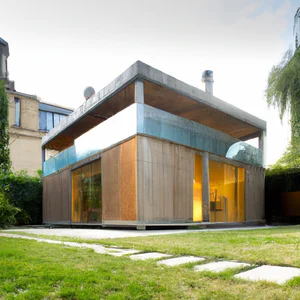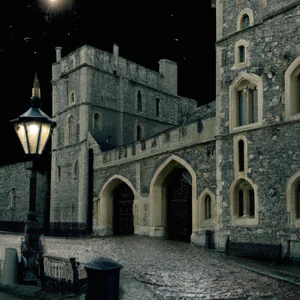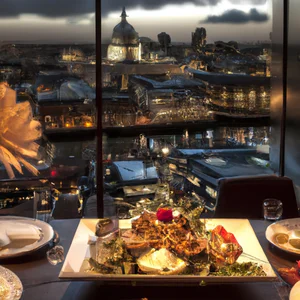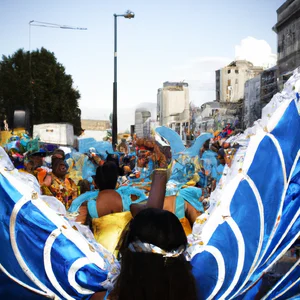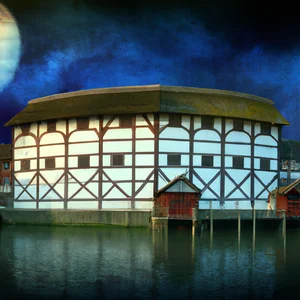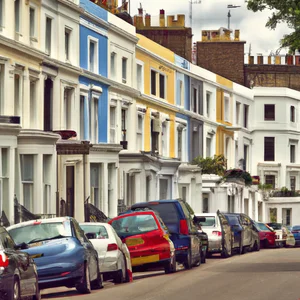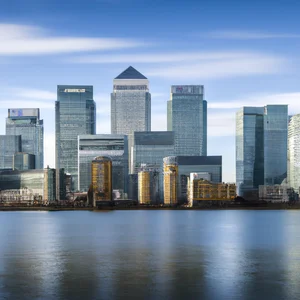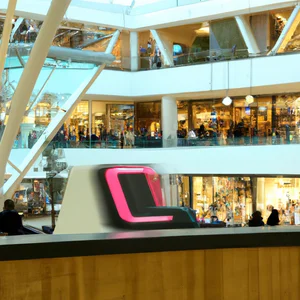Book your experience
Brick Lane: Bengali culture, vintage market and the best curry street
Brick Lane: a real melting pot of Bengali culture, vintage markets, and, trust me, it’s the street where you can eat the best curry around!
So, let’s talk about Brick Lane. It is that place where you feel like you are traveling in another dimension, with its narrow streets full of colors and scents. Every time I go there, it’s like I enter a moving work of art. The Bengali culture is palpable, and it’s impossible not to be captured by the vibrations there, like when you hear the sound of music booming somewhere, and the scent of spices invades your nostrils. Absolutely worth trying!
And I can’t fail to mention the vintage markets! Oh, they are a true paradise for those who, like me, love to rummage through objects from the past. You find everything from clothes that look like they came out of a ’70s movie, to those records you thought no longer existed. The great thing is that each piece has its own story, and who knows, maybe you’ll even find something that reminds you of an old friend or a special moment.
But, back to the curry. You should know that there are some restaurants here that will make your head spin. I don’t want to exaggerate, but I really think the curry I had last time was the best of my life! And I’m not just talking about a decent dish, I mean something so good it makes you wish you’d had a second. Maybe one day, while I was enjoying a chicken curry, I even thought, “If only I had another stomach!”
In short, Brick Lane is a place that embraces you, makes you feel alive and gives you a lot of emotions. Maybe not everyone thinks this way, but for me it’s one of the best experiences you can have in the heart of London. So, if you happen to pass through those parts, don’t miss the opportunity to dive into this mix of cultures, flavors and styles that truly has no equal. In my opinion, it’s a bit like a feast for the senses!
Discover the history of Brick Lane: a journey through time
A personal anecdote
When I first visited Brick Lane, I got lost in its mazes of cobbled streets and the enveloping scents of spices that danced in the air. It was in a small cafe, overlooking the street, that an elderly resident told me stories of how this neighborhood was once the beating heart of the Jewish community, before becoming the hub of Bengali culture in London. His words transported me back in time, making me perceive the historical richness of this place.
A journey through the centuries
Brick Lane is not just a street; it is a crossroads of cultures and histories. Originally known as “Dreadnought Street”, it was an important trade route since the 1500s. Over the centuries, it has seen the arrival of different communities, from Jewish to Bengali, each of which has left its mark. Today, walking along the street, you can notice the remains of this evolution in the murals and vintage shops that line the sidewalks. Local sources, such as the Museum of London, offer great insight into the social history of Brick Lane and its development over time.
Unconventional advice
If you want an authentic experience, don’t limit yourself to visiting only the most well-known places such as the famous market. Take a detour into the side alleys, where you may discover small art galleries and artisan shops telling lesser-known stories of Brick Lane. Here you may also come across local cultural events, such as small art exhibitions or flea markets.
The cultural impact of Brick Lane
The history of Brick Lane is a reflection of the size and complexity of London as a multicultural city. This neighborhood has been able to integrate and celebrate its different identities, becoming a symbol of resistance and innovation. Today, its cultural heritage is visible in every corner, from culinary traditions to street festivals.
Sustainable tourism practices
In recent years, Brick Lane has embraced sustainable tourism practices, encouraging visitors to support local shops and attend events that promote crafts and culture. Choosing to eat at family-run restaurants or purchase produce at local markets not only enriches your experience, but also contributes to the sustainability of the community.
Immerse yourself in the atmosphere
Walking along Brick Lane is a sensory experience: the sound of music blaring from the bars, the scent of curry filling the air and the sight of colorful murals telling stories of struggle and hope. Every step invites you to discover a piece of history, to interact with the vibrant community that lives here.
An unmissable activity
Don’t miss the chance to visit Brick Lane Market, open on Sundays and famous for its unique offerings and delicious street food. Here you can savor a variety of dishes from all over the world, discovering the cultural ties that unite different communities.
Myths and misconceptions
A common misconception is that Brick Lane is just a place for tourists. In reality, it is a living and breathing neighborhood, inhabited by residents who have unique stories to tell. Don’t just watch: interact and discover the secrets this road has to offer.
Final reflection
Brick Lane is not simply a tourist destination; it is a place where stories intertwine and cultures merge. We invite you to reflect: what does exploring a place rich in history and culture mean to you? What new discoveries might you make along the way?
The best curries on Brick Lane: beyond the classic
Walking along Brick Lane, you can’t help but notice an enveloping scent of spices hovering in the air, an irresistible reminder of Bengali gastronomy. My first visit here was an unparalleled sensory experience: as I approached a modest-looking restaurant, an elderly lady with a warm smile invited me to try her famous chicken tikka masala. But the real surprise was discovering that, here in Brick Lane, curry is not just a dish, but a tradition that tells stories of immigration, integration and culinary innovation.
A journey into flavors
Today, Brick Lane is considered the heart of Bengali cuisine in London. The restaurants do not just serve classic curries, but also offer lesser-known dishes, such as bhuna (meat cooked in a thick sauce of spices) and panta bhat (fermented rice), which recall with deep cultural roots. Dishoom, for example, is famous for its aromatic biryani, while at Tayyabs you can enjoy succulent lamb chops marinated in a mix of spices that will take you on a journey through Bengali culture.
Unconventional advice
For an authentic experience, try heading to the weekend market on Brick Lane, where local vendors offer traditional dishes prepared with fresh ingredients. Here, curries are often served in generous portions and at affordable prices, far from the lights of the more popular restaurants. Don’t forget to enjoy a fresh lassi to balance the spices!
Cultural impact
The gastronomic history of Brick Lane is inextricably linked to the Bengali community that settled in the neighborhood in the 1970s. These restaurants not only brought authentic flavours, but also transformed the area into a hub for British culinary culture. Today, curry is loved not only by the neighborhood’s residents, but has become a symbol of London’s multiculturalism.
Sustainability and responsibility
Many Brick Lane restaurants are committed to sustainable tourism practices, using local and organic ingredients. Opting for restaurants that promote short supply chains is one way to support the local economy and reduce environmental impact. Furthermore, some establishments participate in initiatives to reduce food waste, an increasingly important aspect in the contemporary gastronomic landscape.
An immersion in flavours
Imagine sitting at a table in one of Brick Lane’s historic restaurants, with a steaming plate of chicken vindaloo in front of you, while the sound of Bengali music mixes with the buzz of the street. It is a moment that invites us to reflect on how cooking can bring people together and tell life stories.
Myths to dispel
A common myth is that Bengali curry is always overly spicy; in reality, Bengali cuisine offers a range of flavors, from sweet to savory, and many dishes can be adapted to personal tastes. Don’t hesitate to ask restaurants to adjust the spice level to your preference!
A new perspective
As you conclude your meal, think about how gastronomy can be a window into culture. The dining experience on Brick Lane is not just about flavors, but about connections to the history and traditions of a vibrant community. What is the dish that impressed you the most and that you would like to try to make again at home?
Vintage Market: hidden treasures and unique styles
A personal experience
I still remember my first encounter with the Brick Lane vintage market. It was a Saturday morning and, while walking among the stalls, a black leather jacket caught my attention. The elderly salesman, with an astute smile, told me the story of that garment, dating back to the 70s, and how it had been worn by a well-known musician. That jacket was not just a piece of fabric, but a fragment of history, a story to wear. From that moment, I understood that every object here has its own narrative, ready to be discovered.
Practical information
Brick Lane Vintage Market takes place mainly on Sundays, but some shops and stalls remain open during the rest of the week. Visitors can find a variety of items, from retro clothing to unique accessories, and even vintage furniture. Some of the most popular markets include the Brick Lane Sunday Market and the Vintage Market inside the Old Truman Brewery. For an authentic experience, arrive early; most of the most coveted treasures are purchased quickly.
Unconventional advice
If you really want to discover the vintage market’s best-kept secrets, ask sellers about their items. Often, sellers are avid collectors and can tell you incredible stories related to their items. This not only enriches the experience, but allows you to connect with the local community in a unique way.
The cultural and historical impact
Brick Lane Vintage Market is much more than just a shopping spot; it’s a microcosm of London culture. Over the years, it has attracted artists, musicians and designers, helping to make the neighborhood a hub of creativity. Its evolution also reflects the social and cultural changes in London, where reuse and recycling have become symbols of sustainability.
Sustainable tourism practices
Buying vintage products is a sustainable choice that promotes reuse and reduces the environmental impact of fashion. Many sellers are committed to ensuring that their items are recycled, repaired and reused, thus contributing to more responsible fashion. Supporting the vintage market also means supporting small entrepreneurs and local initiatives.
Vivid atmosphere
Walking through the market, you are surrounded by a mix of colours, sounds and scents. The laughter of visitors, the chatter between vendors and live music create a vibrant atmosphere. The stalls are adorned with eccentric clothing and curious objects, while local muralists decorate the surrounding spaces, making this market a true open-air museum.
An experience not to be missed
Don’t miss the opportunity to visit Rough Trade East, a nearby record store famous for its vinyl selection and live concerts. You might discover your new favorite artist as you browse records, all immersed in the same creative atmosphere that characterizes the vintage market.
Myths to dispel
A common misconception is that vintage markets are only for bargain hunters or retro enthusiasts. In fact, it’s a place for everyone: from fashionistas to history lovers, everyone can find something that speaks to their style and personality.
Personal reflection
As I left the market in my leather jacket, I realized that every visit here is a journey back in time, an opportunity to discover forgotten stories and unique styles. Have you ever thought about how many stories are hidden behind the objects we choose to bring home? Next time you visit Brick Lane, remember to look beyond the object and listen to its story.
Street art: the creative expression of the neighborhood
Every time I walk along Brick Lane, I find myself enthralled by a work of art suddenly emerging from a corner. Once, I witnessed a group of local artists painting a mural representing the cultural diversity of the neighborhood. The vibrant colors and bold shapes told stories of hope and resistance, reflecting the soul of an ever-evolving place. This experience made me understand how street art is not just a visual attraction, but a real language that speaks of the community and its history.
Brick Lane’s art scene
Brick Lane’s street art is famous for its variety and its ability to transform public spaces into open-air art galleries. Internationally renowned artists, such as Banksy and Shepard Fairey, have left their mark here, but the real magic lies in the works of emerging and local artists who capture the essence of this multicultural neighborhood. According to London Street Art, a valuable resource for those who love to explore the scene, Brick Lane’s murals address themes such as identity, society and ecology, making them a reflection of contemporary culture.
An insider tip
For a truly authentic experience, I recommend taking a guided street art tour. Not only will you have the opportunity to see incredible works, but you will also be able to hear fascinating stories directly from the artists. Some tours also offer hands-on experiences, where you can try painting your own mural under the guidance of an expert. This will not only allow you to explore your creativity, but will also contribute to a responsible tourism initiative, supporting local artists and promoting respect for public art.
The cultural impact of street art
Brick Lane street art is not just a form of creative expression, but a powerful tool for social change. Over the past few decades, this art form has allowed marginalized voices to emerge, telling stories that often go unheard. Murals celebrating Bengali culture or criticizing social injustices have made Brick Lane a hub for cultural dialogue and social reflection.
Sustainability practices
The street art in this neighborhood is also an example of how art can promote sustainability. Many artists use recycled materials and eco-friendly techniques, contributing to a message of environmental responsibility. Furthermore, the local community is actively involved in the preservation of these works, creating a strong bond between art and community.
Soak up the atmosphere
Imagine strolling along Brick Lane, surrounded by explosive colors and bold shapes. The voices of the local shops and the smell of curry mixing in the air they create a vibrant and welcoming atmosphere. Every corner tells a story, and every mural is an invitation to discover more about this unique neighborhood.
Myths and misconceptions
A common misconception is that street art is just vandalism. In reality, it represents a legitimate form of artistic expression and a valuable cultural resource. Many artists see their art as a way to communicate and connect with the community, challenging the negative perceptions associated with this art form.
A final reflection
Next time you’re on Brick Lane, take a moment to look not only at the murals, but also the people who created them and those who experience them. What is the story they tell you? What message do they send you? Brick Lane’s street art is more than just a backdrop for photos; it is an invitation to see the world through the eyes of those who live in it. What do you think about being inspired by these works and exploring your creativity?
A taste of Bengali culture: festivals and traditions
An unforgettable meeting
The first time I set foot on Brick Lane during the Pohela Boishakh festival, the Bengali New Year, it was like being catapulted into another world. The streets were alive with festive sounds, bright colors and a delicious smell of food wafting through the air. People danced, sang and exchanged greetings with contagious enthusiasm. At that moment, I realized that Brick Lane is not just a place to visit, but an experience to live.
The traditions that animate the neighborhood
Brick Lane is the beating heart of the Bangladeshi community in London, and its cultural traditions are a key part of its identity. Every year, numerous festivals celebrate Bengali roots and customs, including Durga Puja and Eid. During Durga Puja, for example, the streets are transformed into a stage of art and spirituality, with elaborate sculptures, dances and rituals. These events not only attract the local community, but also curious tourists who wish to immerse themselves in a culture rich in history and meaning.
An insider tip
A hidden gem that many visitors overlook is the opportunity to participate in cooking workshops hosted by local Bengali families. These events not only offer in-depth knowledge of Bengali cuisine, but also the chance to interact with community members, hear fascinating stories and learn about culinary traditions that have been passed down from generation to generation. Furthermore, booking in advance is essential, as places are limited and highly sought after.
A profound cultural impact
The Brick Lane neighborhood is much more than just a place; it is a stage that tells the story of a resilient and vibrant community that has found its voice in a cosmopolitan metropolis like London. Bengali culture has enriched the social and cultural fabric of the city, contributing to greater intercultural understanding and recognition of diversity.
Sustainability and responsibility
Participating in cultural events and festivals is one way to support responsible tourism practices. Many of these events are organized by local associations that promote arts and crafts, providing a platform for local artists and contributing to the community’s economy. Choosing to buy artisanal products during festivals is a way to directly support local families.
Immerse yourself in the atmosphere of Brick Lane
Imagine walking among the colorful stalls, listening to the notes of traditional melodies, while savoring a typical dessert like roshogolla. The atmosphere is vibrant, every corner tells a story, every smile is an invitation to discover more. Brick Lane is a place where cultures intertwine, creating a mosaic of unforgettable experiences.
An unmissable activity
If you find yourself in Brick Lane during a festival, don’t miss the opportunity to try a traditional dish such as panta bhat, fermented rice served with fried fish and green chillies. It is an authentic dining experience that reflects the warmth and hospitality of the Bengali community.
Myths and misconceptions
A common misconception is that Bengali festivals are exclusive to the Bengali community. On the contrary, these events are open to all, and visitor participation is encouraged. Inclusivity is one of the fundamental values that characterizes these celebrations, making them a unique opportunity to come together and celebrate together.
A personal reflection
After experiencing that festival, I realized that Brick Lane is much more than just a neighborhood; it is a place where traditions intertwine with modernity, creating a unique atmosphere. And you, are you ready to discover the wonders that this corner of London has to offer?
Unconventional tip: explore the less touristy alleys
A personal experience
Walking along Brick Lane, immersed in the bustle of the market and the scents of local cuisines, I found myself following a small side street, attracted by a vibrant mural that told the story of the Bengali community. That detour took me to a completely different world, away from tourists and close to the true essence of the neighborhood. The less traveled alleys, such as Hanbury Street and Wilkes Street, are hidden treasures that tell stories of artisans, artists and residents, where time seems to have stopped and authenticity reigns supreme.
Practical information
If you want to discover these hidden corners, it is advisable to visit Brick Lane during the week, when tourist traffic is reduced. Weekends can be crowded, especially during the Sunday market. Bring a map or use apps like Google Maps to find your way around the alleys. Don’t forget to stop off at some of the local cafes and art galleries, such as Rivington Place, which often hosts exhibitions by emerging artists.
An insider tip
Unconventional advice? Try to visit Backyard Market, a market that takes place in a little-known courtyard, where you can find local handicrafts, vintage items and artwork by local artists. Here, away from the clamor of Brick Lane, you might even come across a street musician playing tunes that tell stories of the neighbourhood’s past.
Cultural and historical impact
These alleys are not just places of passage; they are living archives that preserve the memory of the community. Brick Lane was once a hub of activity for migrants and small businesses, a melting pot of cultures that has shaped contemporary London. Exploring these spaces means embracing the history of a community that helped make Brick Lane the vibrant cultural mosaic we know today.
Sustainable tourism
Encouraging tourism in lesser-known laneways not only offers a more authentic experience, but also supports local artisans and small businesses, contributing to a more sustainable economy. Opting for artisanal products instead of commercial souvenirs helps keep local traditions alive and reduce environmental impact.
The atmosphere of Brick Lane
Walking through these alleys, you can hear the echoes of Bengali conversations and the smell of spices mixing with the fresh air. The bright colors of the murals and the signs of the small shops create a vibrant atmosphere, while the sound of footsteps on the cobblestones adds a unique rhythm to your journey. Every corner has a story to tell, every door is an invitation to discover something new.
An activity worth trying
I recommend you attend a street art workshop, offered by local artists in one of the alleys. You will have the opportunity to express your creativity and at the same time learn more about the culture art of Brick Lane. Not only will you take home a unique work of art, but you will also have an experience that will enrich your trip.
Myths and misconceptions
A common misconception is that Brick Lane is just a tourist attraction, a string of Indian restaurants and souvenir shops. In fact, the neighborhood is a rich and diverse cultural ecosystem that deserves to be explored outside of its main streets.
Personal reflection
After discovering these less touristy corners of Brick Lane, I wondered: how often do we stop to explore what lies beyond the crowded, familiar streets? The true beauty of a place often lies in the hidden details, ready to reveal themselves to those who are willing to look for them. And you, are you ready to discover your personal adventure in Brick Lane?
Brick Lane Market: sustainability and local craftsmanship
My first visit to Brick Lane Market was an experience that awakened in me a deep respect for local craftsmanship and sustainability. While walking among the various stands, surrounded by vibrant colors and heady scents, I came across a small stall run by an artisan who created ceramics by hand. As we spoke, he told me how he uses local clays and traditional techniques, with the aim of reducing the environmental impact of his art. This chance encounter transformed my perception of the market: it was not just a place to shop, but a center of community and creativity.
A community-friendly market
The Brick Lane market, open every Sunday, is a real melting pot of cultures and traditions. Here, visitors can find a variety of products, from local crafts to ethnic foods, that reflect the diversity of the neighborhood. According to the market’s official website, many vendors are local artisans who are committed to using sustainable materials and promoting ethical business practices. This not only supports the local economy, but also preserves the traditions that make Brick Lane unique.
An insider tip
If you want an authentic and little-known experience, look for stands offering farm-to-table products. Sometimes, smaller vendors don’t have as much visibility, but they offer unique items such as jewelry made from recycled materials or food prepared with fresh ingredients from from local farms. These hidden treasures can give you a more intimate and personal experience.
The cultural impact of Brick Lane
The market is not just a place of commercial exchange; it is also a cultural meeting point. Here, the stories of the artisans and sellers intertwine, creating a rich and varied social fabric. The presence of the Bengali community has helped shape the market, making it a showcase of talents and traditions. Additionally, events such as the “Brick Lane Design Trail” highlight the importance of sustainable design and innovation.
Responsible tourism practices
When visiting the market, it is important to take a responsible approach. Choosing to buy from artisans and small producers not only supports the local economy, but also promotes sustainable practices. Many sellers are mindful of the environmental impact of their creations, using recycled materials and eco-friendly production methods.
An unmissable activity
While you explore the market, don’t miss the chance to take part in a pottery or craft workshop. These events offer a unique opportunity to learn directly from the artisans and take home a handmade piece, a souvenir that tells a story.
Myths to dispel
A common misconception is that Brick Lane Market is exclusively a place for tourists. In reality, the majority of visitors are locals and culture enthusiasts looking for authentic and unique products. This is what makes the atmosphere so vibrant and authentic.
A final reflection
What value do you place on local craftsmanship and sustainability when you travel? Visiting Brick Lane Market might make you think about how the choices we make while traveling can influence the communities we visit. We invite you to discover not only what you buy, but also the stories and traditions behind the products.
Authentic experiences: cafes and restaurants not to be missed
When I first stepped onto Brick Lane, the enveloping smell of spices hit me like a warm hug on a cold London day. It was a Saturday afternoon and the street was alive, vibrant with colors and sounds. I immediately headed to a little cafe, Teas & Toast, which had been recommended to me by a local friend. Here, I savored a homemade chai that transported me on a sensory journey, enriched by a coconut dessert that seemed to have been cooked with love. This is just a taste of what Brick Lane has to offer.
Cuisine and coffee to discover
Brick Lane is a true culinary paradise, with restaurants offering an incredible range of dishes, from the most traditional to the most innovative. You can’t miss dinner at Dishoom, which pays homage to the cafés of Bombay, with dishes like their famous chai and their exquisite naan. But if you want something truly authentic, head to Aladin, a heritage Bengali restaurant, where curry dishes are prepared according to recipes passed down for generations. Their specialty, chicken biryani, is so tasty that it will make you forget about any other dish you have ever tasted.
An insider tip
If you want an authentic experience, try to visit restaurants during lunch time, when places get crowded. This is the time when the food is fresh and the daily specials can surprise us. Also, don’t forget to ask the staff which dishes residents love most: menus can often hide little-known gems.
The cultural impact of gastronomy
Brick Lane gastronomy is not just a matter of taste; it is a reflection of its history. In the 1970s, a growing Bengali community began to settle here, bringing with them culinary traditions that transformed the neighborhood into an epicenter of flavor. Each dish tells a story of migration, culture and identity.
Sustainability and responsible practices
Many of Brick Lane’s restaurants are making a commitment to using local, sustainable ingredients. Rola Wala, for example, works with local suppliers to ensure that each dish is not only delicious, but also environmentally friendly. This approach not only promotes sustainability, but also supports the local economy.
An experience worth trying
For an unforgettable experience, book a dinner at the Curry Leaf Cafe, where you can enjoy a curry tasting menu, accompanied by a selection of local craft beers. This is not just a meal, but a journey through the flavors of India and Bangladesh.
Debunking a myth
A common misconception about Brick Lane is that it’s just a place to eat curry. In fact, the neighborhood offers a variety of international cuisines, from Middle Eastern falafel to Italian desserts. While curry remains one of the stars of the street, the gastronomic diversity is a surprising discovery.
In conclusion, Brick Lane is not just a gastronomic destination; it is a journey into the heart of a vibrant and multicultural community. Have you ever wondered how a simple curry dish can encapsulate stories, traditions and the soul of a place? Prepare your taste buds, because Brick Lane is ready to surprise you.
The Bengali community: a little-known cultural aspect
When I first set foot on Brick Lane, little did I know that I would have the opportunity to immerse myself in one of London’s most vibrant and warmest communities. I still remember the moment when, while I was walking among the restaurants and markets, a group of Bengali women in traditional clothes started singing folk songs. Their voice, combined with the scent of curry in the air, created a magical atmosphere that made me feel part of something special.
A journey through history
The Bangladeshi community of Brick Lane has deep roots, dating back to the 1970s, when many immigrants from Bangladesh settled in this area, bringing with them their culture, their traditions and, of course, their cuisine. Today, Brick Lane is an epicenter of Bengali culture, where daily life is permeated by festivals, celebrations and rituals that tell stories of resilience and integration. It is not just a place to eat a good curry, but a real living museum of cultural traditions.
An insider tip
If you really want to understand the vitality of the Bengali community, I recommend visiting Brick Lane during one of the annual festivals, such as Pohela Boishakh, the Bengali New Year. During this celebration, the streets come alive with dance, music and markets offering culinary specialties. It’s an experience that goes beyond just sightseeing: it’s an opportunity to connect with culture in a deep and authentic way.
The cultural contribution
The presence of the Bengali community has influenced not only the food, but also the art and architecture of Brick Lane. The colorful houses and murals that adorn the walls tell stories of struggle and hope, while the restaurants and cafes offer a safe and welcoming haven for those seeking comfort and familiarity. This cultural exchange has enriched London, making Brick Lane a melting pot of diverse experiences.
Responsible tourism
When you visit Brick Lane, take a moment to consider the impact of your choices. Choose to eat at family-run restaurants, where the owners are often part of the community. Not only will you contribute to the local economy, but you will also have the opportunity to enjoy authentic Bengali dishes prepared with passion and care.
How to discover the community
If you want to deepen your knowledge of Bengali culture, I recommend taking part in a cooking workshop. Many Brick Lane restaurants offer courses where you can learn to prepare traditional dishes under the guidance of expert chefs. It’s a fun, interactive way to immerse yourself in the culture, and maybe you’ll go home with a new recipe to share with friends and family.
Myths and misconceptions
A common misconception is that Brick Lane is just a curry place. While food is undoubtedly a main attraction, the Bengali community offers so much more. From colorful festivals to live music, art and fashion, there’s a whole world to explore that goes beyond expectations.
In conclusion, Brick Lane’s Bengali community is not just an aspect of its identity, but its soul. Each visit offers the opportunity to discover, learn and connect with a culture that, while rooted in ancient traditions, is constantly evolving. Have you ever wondered what it really means to be part of such a vibrant and welcoming community? Brick Lane is waiting to reveal its secrets to you.
Events and live music: experience the nightlife of Brick Lane
Every time I find myself in Brick Lane, I can’t help but remember an unforgettable evening spent in a small underground bar, where a local band was playing a mix of jazz and Bengali influences. Music resonated through the exposed brick walls, creating an intimate atmosphere that seemed to envelop every viewer. That night, I discovered not only extraordinary musical talent, but also the rich cultural tapestry that makes Brick Lane a pulsating center of events and nightlife.
A multicolored stage of events
Brick Lane is a true epicenter of cultural and musical events. Every week, the neighborhood comes alive with concerts, open mic nights and festivals that celebrate the diversity of the community. Venues like The Old Blue Last and The Vortex Jazz Club offer a regular schedule of live events, ranging from indie to electronic music to traditional Bengali rhythms. To stay up to date, I recommend checking sites like Time Out London or Eventbrite, where you can find a complete list of upcoming events.
An insider tip
If you want a truly unique experience, I suggest attending one of the jam session nights held in some of the lesser-known bars in the area. Many emerging artists perform at these events, providing an opportunity to discover new talent. Don’t forget to get there early, as seating is limited and the atmosphere quickly gets lively!
The cultural impact of Brick Lane
Brick Lane’s nightlife is a reflection of its history and community. The neighborhood has always been a crossroads of cultures, and music is one of the most powerful ways to celebrate this diversity. Musical evenings not only entertain, but also create a sense of belonging and connection among residents and visitors, helping to keep cultural traditions alive.
Sustainable tourism and responsibility
In an age where sustainability is key, many Brick Lane venues are adopting responsible practices. Bars and restaurants are committed to using local ingredients and reducing waste. Choosing to support these places not only enriches your experience, but also helps preserve the authenticity of the neighborhood.
Soak up the atmosphere
Imagine strolling along the streets illuminated by colorful lights while the sound of live music fills the air. Laughter and conversations mix with melodic notes, creating a vibrant atmosphere that invites you to let go. The nightlife of Brick Lane is a sensory experience you can’t miss.
An activity worth trying
Don’t miss the chance to attend a special event, like the Brick Lane Music Festival, held every year. This celebration of music and culture offers a variety of performances ranging from local artists to emerging names, all in an atmosphere of celebration and sharing.
Myths and misconceptions
A common misconception is that Brick Lane’s nightlife is exclusively for tourists. In fact, the events attract a diverse crowd, from residents to local artists, creating an authentic and welcoming environment. Don’t be fooled by those who say the neighborhood is only for visitors: you live and breathe culture here.
Final reflection
Brick Lane nightlife is more than just entertainment; it’s an opportunity to immerse yourself in a vibrant and welcoming community. What stories might you discover while listening to live music in this corner of London? Next time you visit Brick Lane, allow the music to guide you and be amazed by what the neighborhood has to offer.

 Architecture and Design
Architecture and Design Cities and Regions
Cities and Regions Culture and History
Culture and History Events and Festivals
Events and Festivals Fashion and Shopping
Fashion and Shopping Food and Wine
Food and Wine Nature and Adventure
Nature and Adventure Unique Experiences
Unique Experiences


















